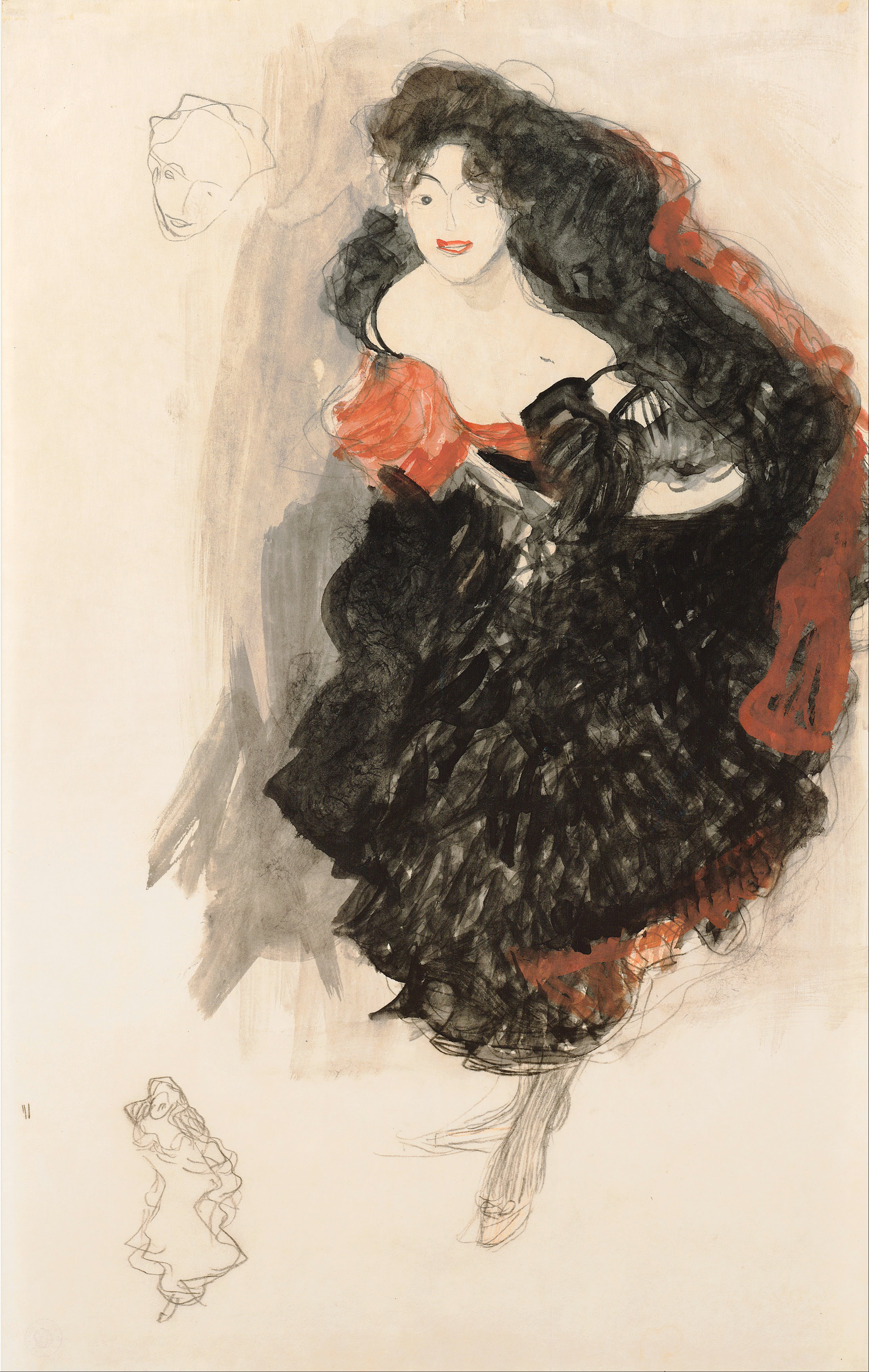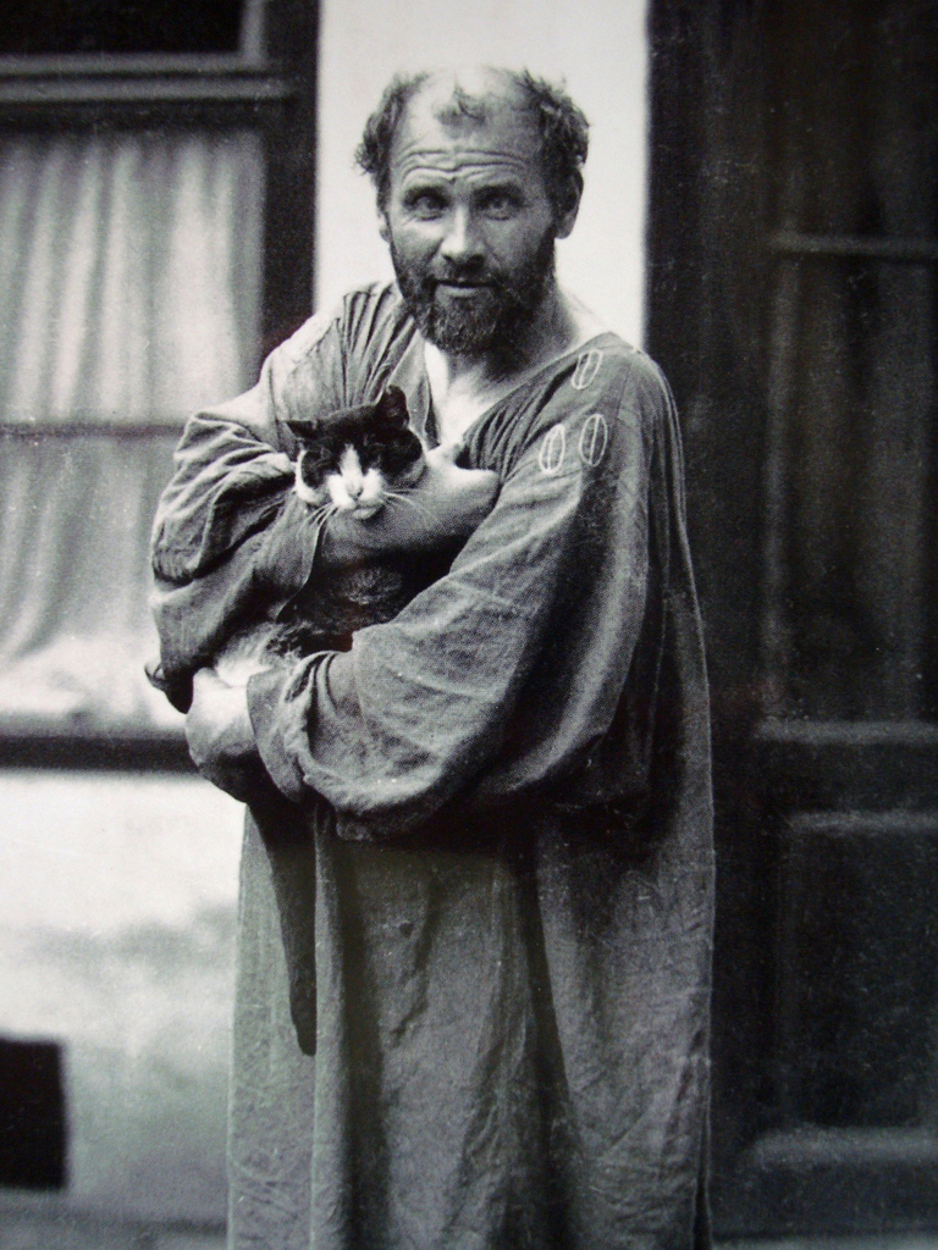Since Gustav Klimt, during his lifetime, was already regarded as Austria’s greatest living artist, he could afford to surround himself at his atelier with young, beautiful models—with whom he is thought to have fathered twelve illegitimate children. As soon as he liked a model’s pose, he would sketch it, thus carefully planning his portraits and symbolist portrayals with numerous studies done in pencil. In doing so, he would try out all the possible variants of a particular position in order to ultimately put the best one to canvas. In Klimt’s oeuvre, graphic works were typically intended as preliminary sketches, and they can often differ considerably from the motif at which he eventually arrived. Such a procedure is evident in this study for the painting Judith II—the painting, which presently hangs in the Galleria d’Arte Moderna in Venice, contains not a hint of the fiery, vigorous movement seen in the preliminary study here. But the starting point for the painting, which Klimt eventually created, apparently was indeed this depiction of a flamenco dancer seemingly striding across the page with rapid, dance-like steps. Klimt pointedly emphasizes the contrast between her white, naked shoulders and the black dancing dress ornamented with red ruffles. This is one of the few works on paper that Klimt executed in colour. I hope it won't be a surprise to you when tomorrow we will feature the final, oil version of Judith II :)




Study for Judith II
drawing on paper • 345 x 542 mm
 Gustav Klimt
Gustav Klimt